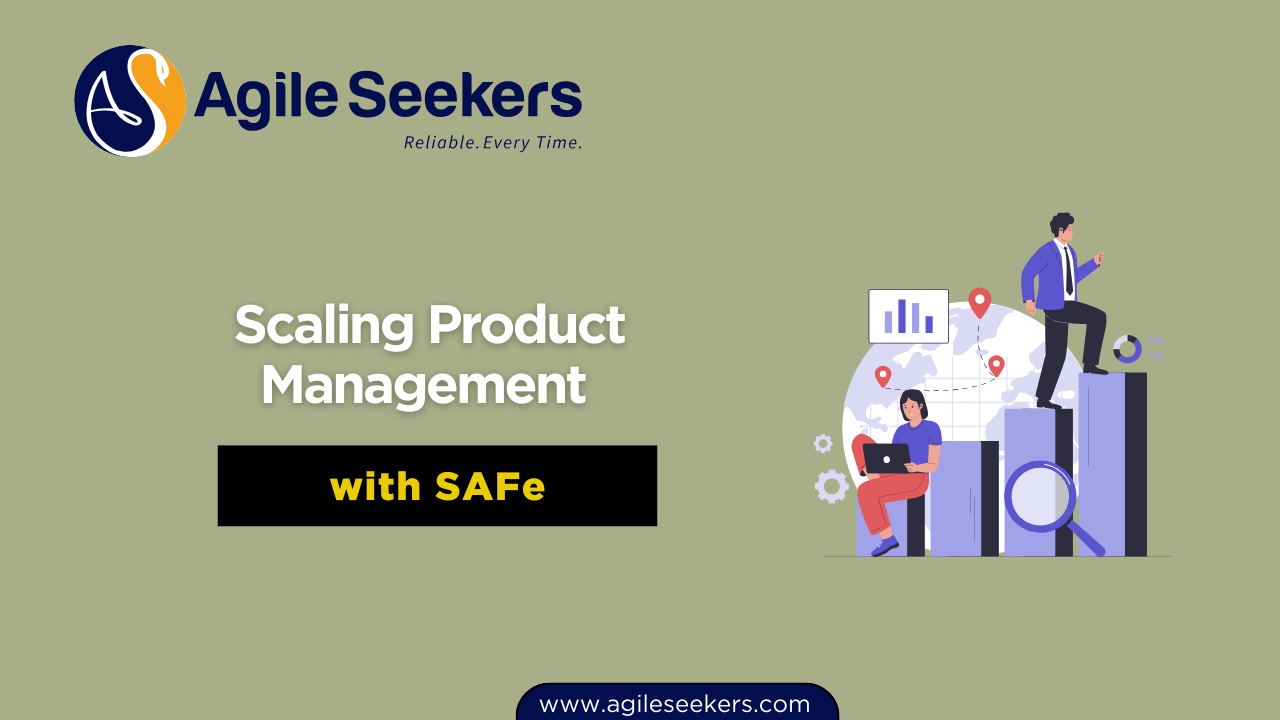Scaling Product Management with SAFe: Collaboration Across Team, Program, and Portfolio Levels

In a Lean-Agile enterprise, delivering consistent value at scale requires more than just agile teams. It demands strategic coordination, alignment of vision, and tight collaboration across multiple levels. This is where the SAFe Product Owner/Product Manager (POPM) plays a critical role. POPMs act as a bridge between customer needs and business goals, ensuring value delivery across the team, program, and portfolio layers of SAFe.
In this article, we explore how POPMs contribute at each of these levels, helping enterprises scale product management effectively with the Scaled Agile Framework.
Product Ownership in SAFe: An Overview
The SAFe framework separates responsibilities between the Product Owner (PO) and Product Manager (PM), ensuring that the focus on both tactical and strategic execution is well balanced. Together, they represent the voice of the customer, translating needs into backlog items and ultimately into valuable product increments.
-
Product Owners focus on the Team Level.
-
Product Managers operate primarily at the Program and Portfolio Levels.
For professionals looking to excel in this domain, enrolling in a SAFe POPM Certification is a foundational step. This course equips you to work seamlessly within SAFe roles and responsibilities.
Collaboration at the Team Level
At the team level, POPMs—specifically the Product Owner—work closely with Agile teams to ensure alignment on what to build and when. Key responsibilities and collaboration points include:
1. Defining and Prioritizing the Team Backlog
The Product Owner owns the Team Backlog and ensures that user stories are clearly defined, prioritized, and understood.
2. Participating in Iteration Planning
POs lead the planning activities for the iteration, helping the team commit to user stories that align with program priorities.
3. Ensuring Acceptance of Stories
POs define acceptance criteria and verify that the delivered stories meet the Definition of Done (DoD).
4. Acting as the Customer Proxy
They represent the customer’s needs during development and serve as the go-to for any clarification.
For teams new to agile, this clear connection between team execution and customer value is where the benefits of SAFe Product Owner Certification become immediately visible.
To understand how the SAFe framework supports agile team success, check out the SAFe Team and Technical Agility article.
Collaboration at the Program Level
At the program level, the Product Manager works within the Agile Release Train (ART) alongside Release Train Engineers (RTEs), System Architects, and Business Owners. Here, collaboration becomes more strategic.
1. Managing the Program Backlog
Product Managers curate and prioritize features in the Program Backlog based on business value, customer needs, and alignment with strategic themes.
2. Engaging with System Architects and UX
They collaborate to ensure that technical and experience enablers are balanced with functional features.
3. Participating in PI Planning
PMs play a pivotal role in Program Increment (PI) Planning. They present the vision, roadmap, and top features to the ART and ensure alignment across teams.
4. Facilitating Feedback Loops
Post-PI demos and Inspect and Adapt sessions offer opportunities for PMs to gather feedback and improve planning and delivery in future cycles.
SAFe Product Owner/Manager certification dives deep into these interactions, enabling participants to make data-driven decisions that support strategic execution.
You can learn more about Agile Product Delivery in SAFe to understand how this collaboration delivers real value.
Collaboration at the Portfolio Level
While the SAFe POPM role does not have direct ownership at the portfolio level, Product Managers interact with portfolio stakeholders to ensure the flow of value aligns with enterprise strategy.
1. Aligning with Strategic Themes
PMs work with Epic Owners and Lean Portfolio Management to ensure that features serve larger strategic themes and investment guardrails.
2. Influencing Investment Decisions
By providing data on feature performance and customer impact, PMs help shape portfolio prioritization.
3. Contributing to Lean Budgeting Discussions
PMs may be involved in discussions that allocate budgets across value streams, advocating for investments that drive measurable outcomes.
4. Ensuring Transparency and Reporting
Through metrics and roadmaps, they offer visibility into progress, risks, and alignment with business goals.
Although the SAFe POPM is not a portfolio-level role per se, their contributions significantly influence strategic flow and ensure that customer needs are visible even at the highest level of planning.
Gain more insights about Lean Portfolio Management to see how strategic funding and governance interact with product management.
Tools That Support Multi-Level Collaboration
To operate across these three levels effectively, POPMs often leverage tools and practices that support visibility and flow. These include:
-
Program and Team Kanban Boards
-
Portfolio Kanban Systems
-
Customer Journey Maps
-
Objectives and Key Results (OKRs)
-
Roadmaps and PI Objectives
Adopting such tools is part of what you’ll explore in a SAFe Popm training, which covers both theory and practical application.
Real-World Example: Financial Services Enterprise
In a leading financial institution, Product Owners and Product Managers working under SAFe faced a growing backlog of regulatory compliance features. While these features held little customer-facing value, they were mission-critical.
-
At the team level, POs ensured the technical stories aligned with compliance.
-
At the program level, PMs prioritized them within the ART’s roadmap.
-
At the portfolio level, they justified budget allocation for compliance work, aligning with legal and risk mitigation strategies.
The outcome? Faster compliance implementation and minimal disruption to innovation-focused initiatives.
Final Thoughts
Scaling product management in SAFe is not just about process—it’s about strategic alignment, collaboration, and delivering value at every level. POPMs are at the heart of this engine. By understanding their responsibilities and interactions across team, program, and portfolio levels, organizations can achieve sustainable agility.
Ready to scale your impact as a POPM? Explore the full benefits and outcomes through SAFe POPM Certification.




















